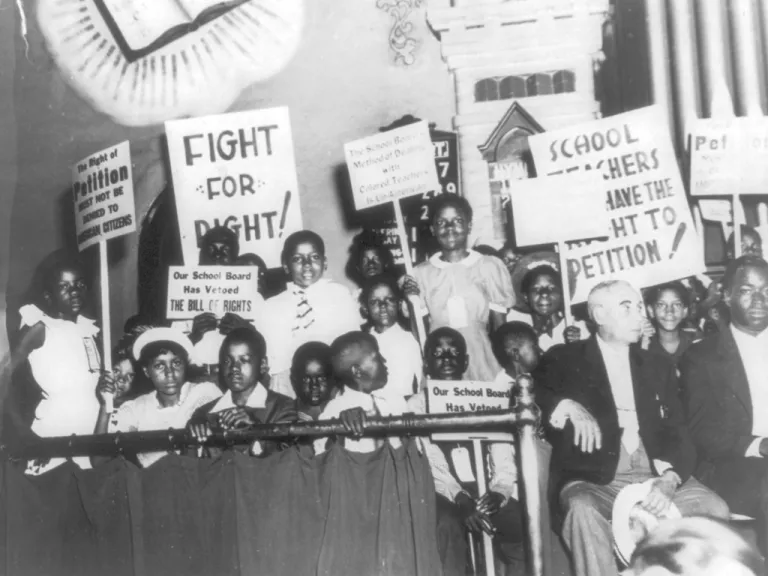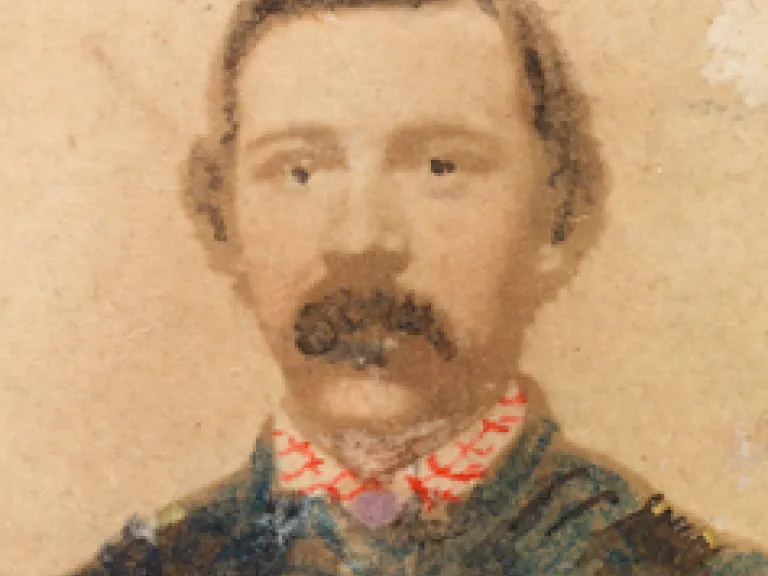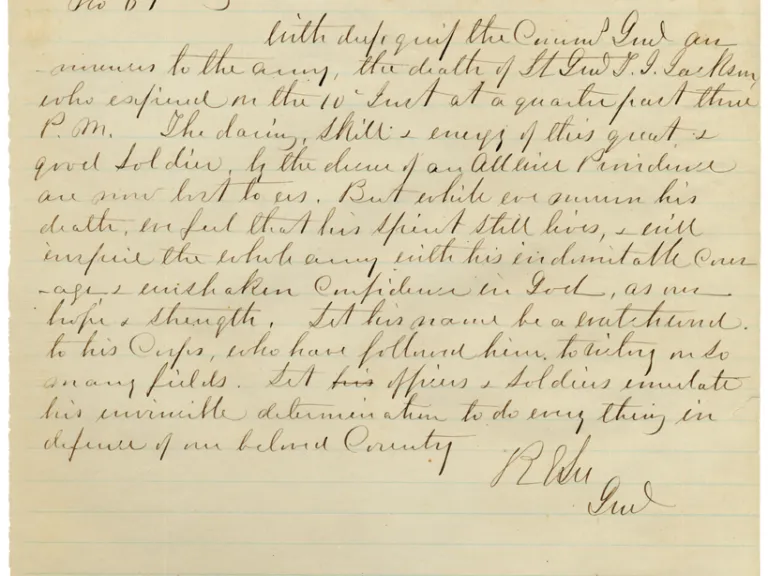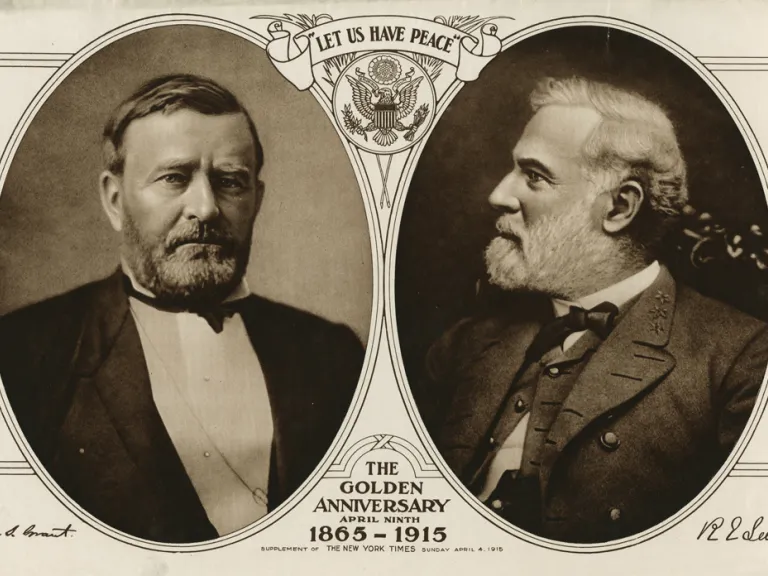The search results below contain listings from our website. To search our library and museum collections catalogs, please visit the Collections page.
Article Set - Chapter
Acknowledgements
An American Turning Point: The Civil War in Virginia is a signature program of the Virginia Sesquicentennial of the American
Article Set - Chapter
Aftermath
"From the political point of view, the murder of John Brown . . . would impart to the Union a creeping fissure that at the
Article Set - Intro
An American Turning Point: The Civil War in Virginia
Image

An American Turning Point: The Civil War in Virginia is divided into two parts that pose a series of questions. Waging War examines how the conflict was fought and Surviving War measures the impact of the war on civilian life.
Article Set - Chapter
An Eyewitness Account of Stonewall Jackson's Wounding
On the second day of the battle of Chancellorsville, May 2, 1863, the Confederate Army of Northern Virginia experienced its
Article Set - Chapter
Beginnings of Black Education
Few black Virginians received a formal education until public schools were widely established during Reconstruction. Public
Article Set - Chapter
Brown I and Brown II
In 1950 the NAACP decided that it would no longer file lawsuits seeking equal educational facilities, but only those that
Article Set - Intro
Civil Rights Movement in Virginia
Image

The civil rights movement of the 1950s, 1960s, and 1970s was one phase in the longer black freedom struggle that began when the first Africans arrived in Virginia in 1619 and continues today.
Article Set - Chapter
Conclusion
Throughout the twentieth century and during the past decade, apologists for John Brown have turned out imagery and
Article Set - Chapter
Conclusion - Did the Civil War End at Appomattox?
Lee’s army had become the embodiment of Confederate nationalism, and after its surrender other southern forces soon gave up
Article Set - Chapter
Danville
The most violent episode of the civil rights movement in Virginia occurred in Danville during the summer of 1963—at about the
Article Set - Chapter
Elections from 1832 to 1872
This section contains information and memorabilia on the elections from 1832 to 1872. Scroll down the page to learn more
Article Set - Chapter
Elections from 1924 to 1964
This section contains information and memorabilia on the elections from 1924 to 1964. Scroll down the page to learn more
Article Set - Chapter
Elections from 1968 to 2016
This section contains information and memorabilia on the elections from 1968 to 2016. Scroll down the page to learn more
Article Set - Chapter
Equal Access to Public Accommodations
Although integrating the nation's schools was the first priority of the civil rights movement, the denial of equal access to
Article Set - Intro
Eye of the Storm: The Civil War Drawings of Robert Knox Sneden
Image

Through his 5,000-page personal memoir, Robert Knox Sneden takes us to the front lines of the Civil War.
Article Set - Intro
General Orders No. 61
Image

On May 2, 1863, during the battle of Chancellorsville, friendly fire struck Lt. Gen. Thomas J. "Stonewall" Jackson while he and others rode amid the chaos of the still-forming Confederate lines. Thus began the series of events that led eventually to Robert E. Lee composing General Orders No. 61, which announced to his army the death of Jackson.
Article Set - Chapter
Hampton Institute and Booker T. Washington
Hampton Normal and Agricultural Institute was founded in 1868 by General Samuel Armstrong. He was interested in moral
Article Set - Intro
Lee and Grant
Image

By the end of the Civil War, most Americans considered either Robert E. Lee or Ulysses S. Grant to be a hero. The time has come for a reassessment of these two men, on whom fell the greatest responsibility for the survival or disintegration of the United States.
Article Set - Chapter
Massive Resistance
In 1954, the political organization of U.S. senator Harry F. Byrd, Sr., controlled Virginia politics. Senator Byrd promoted
Article Set - Chapter
Memory
Which John Brown have Americans remembered? The crusader for abolition or the bloodthirsty terrorist? Brown was not forgotten
